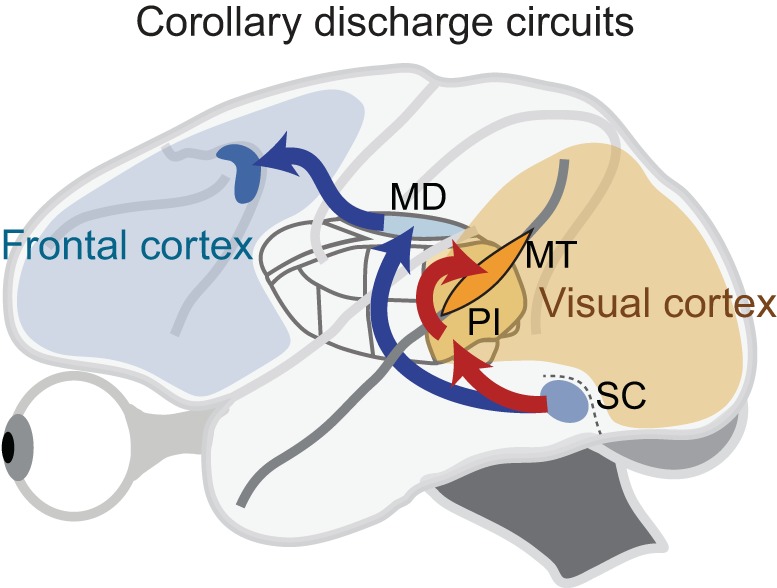Fig. 1.

A potential corollary discharge (CD) circuit in the monkey for producing saccadic suppression (red arrows). Neurons in the visual layers of the superior colliculus (SC) project to the pulvinar, with the projection centered on a subregion of the inferior pulvinar (PI). Many of these pulvinar neurons then project to the middle temporal visual area (MT) in the superior temporal sulcus of cerebral cortex. Blue arrows show a previously established pathway from the SCi saccade-related layers of SC through MD thalamus to frontal cortex, which carries a CD signal for use in the control of saccadic eye movements.
